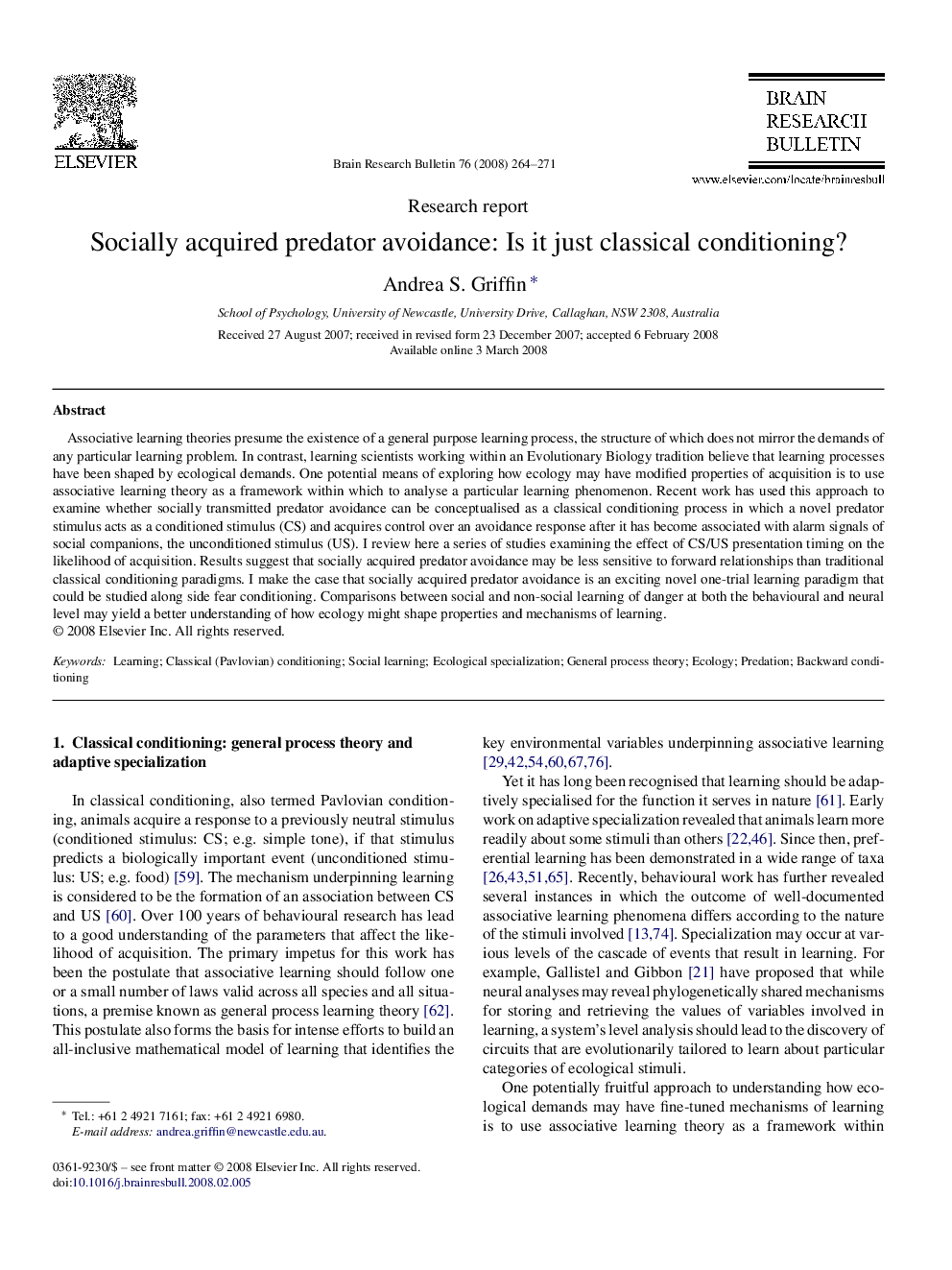| کد مقاله | کد نشریه | سال انتشار | مقاله انگلیسی | نسخه تمام متن |
|---|---|---|---|---|
| 4320133 | 1290850 | 2008 | 8 صفحه PDF | دانلود رایگان |
عنوان انگلیسی مقاله ISI
Socially acquired predator avoidance: Is it just classical conditioning?
دانلود مقاله + سفارش ترجمه
دانلود مقاله ISI انگلیسی
رایگان برای ایرانیان
کلمات کلیدی
موضوعات مرتبط
علوم زیستی و بیوفناوری
علم عصب شناسی
علوم اعصاب سلولی و مولکولی
پیش نمایش صفحه اول مقاله

چکیده انگلیسی
Associative learning theories presume the existence of a general purpose learning process, the structure of which does not mirror the demands of any particular learning problem. In contrast, learning scientists working within an Evolutionary Biology tradition believe that learning processes have been shaped by ecological demands. One potential means of exploring how ecology may have modified properties of acquisition is to use associative learning theory as a framework within which to analyse a particular learning phenomenon. Recent work has used this approach to examine whether socially transmitted predator avoidance can be conceptualised as a classical conditioning process in which a novel predator stimulus acts as a conditioned stimulus (CS) and acquires control over an avoidance response after it has become associated with alarm signals of social companions, the unconditioned stimulus (US). I review here a series of studies examining the effect of CS/US presentation timing on the likelihood of acquisition. Results suggest that socially acquired predator avoidance may be less sensitive to forward relationships than traditional classical conditioning paradigms. I make the case that socially acquired predator avoidance is an exciting novel one-trial learning paradigm that could be studied along side fear conditioning. Comparisons between social and non-social learning of danger at both the behavioural and neural level may yield a better understanding of how ecology might shape properties and mechanisms of learning.
ناشر
Database: Elsevier - ScienceDirect (ساینس دایرکت)
Journal: Brain Research Bulletin - Volume 76, Issue 3, 15 June 2008, Pages 264-271
Journal: Brain Research Bulletin - Volume 76, Issue 3, 15 June 2008, Pages 264-271
نویسندگان
Andrea S. Griffin,